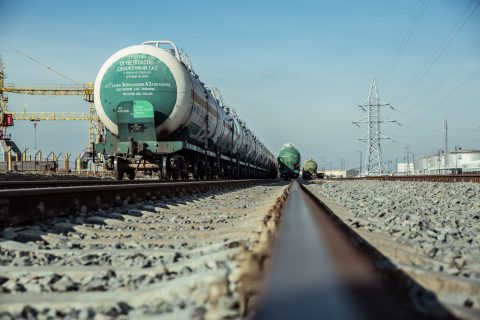How did Q1 2023 look for China-Europe rail freight?

Eurasian rail freight services between China and Europe have been under pressure for almost three years since the pandemic started in 2020, followed by the invasion of Ukraine last year and all the aftermaths it produced. The first quarter of operations in 2023 is already over, and the Eurasian corridor is subject to a new regime. RailFreight.com had an interview with Xinyao Zhang, sales manager of BTT Freight Management, to get better insights into the market trends.
Several freight forwarders have indicated that Q1 2023 was quite challenging, with declining cargo volumes between China and Europe and a decreased European demand for shipments via rail. While specific figures are still unavailable, pessimists could say the lowest point of the China-Europe Express (CEE) market is looming. An effective way to analyse the current Silk Road trends and possible volume drop is to understand the current status of the China-Europe Express trains.
50 TEUs threshold
This year, most of the CEE trains are running to Russia. As more and more “China Europe Express” trains are heading to Moscow, it also raised a question inside the industry: will China-Europe traffic shift to Russia in 2023? The answer has not yet been unveiled, but some signs are pointing towards this direction. Examples of these new trends are the newly opened Beijing-Moscow and Langfang-Moscow routes and the recently inaugurated Shenyang China Europe Express Consolidation Center.
Zhang explained that apart from the issues concerning the route via Russia, new policies from China Railway are making it harder to ship CEE trains. The Chinese national railway company introduced a new threshold, set at 50 TEUs before CEE trains can depart. However, the reality is that gathering such volumes, especially for direct trains, is not such an easy task.
Therefore, platform companies have introduced more mixed trains instead of direct trains for China-Europe services, said Zhang, adding that “in the system, such trains will be able to receive the goods heading to different destinations in Europe”. Some examples of recent mixed train services are the “Cross Europe” train operated by Chengdu last September, heading to Luxembourg and Poland and the Yixinou (Yiwu, Xinjiang, Europe) Express, which collects goods from Duisburg, Madrid, Hamburg and Małaszewicze.
Specific customers are still finding CEE advantageous
Zhang said that there are mostly two types of customers who are still choosing the China-Europe Express. Customers who are strict on timeliness and customers who are located in the surroundings of the CEE infrastructure. When it comes to timeliness, a good example is the clothing industry. They still choose the CEE, so they can arrive in Europe in about 20 days, and organise further distributions.
The other type of customers are inland shippers in the vicinity of the consolidation centres for CEE trains. If the cargo is moved via the sea, it still needs to reach the port through the inland logistics network, which results in additional costs. Therefore, some cargo owners around the consolidation centres will continue to choose the CEE for economic reasons.
Rail freight fares are still too far from sea shipping prices
After soaring during the epidemic, ocean freight prices fell again this year. From Shanghai to the port of Hamburg, the shipping price of a 40-foot container is about 1,100 US dollars; if you take the CEE from Xi’an directly to Duisburg, the price of freight (40-foot container) is about 7,000 US dollars. Thus, rail is almost seven times higher than the price of ocean freight.
Consequently, those shippers who do not have a demand for time efficiency turn back to ocean freight. It needs to be mentioned that it is not only the ocean freight price impacting the CEE but also the rail-sea intermodal prices. Under the rail-sea intermodal subsidy scheme that local Chinese governments implement, shippers can receive better prices if they use the rail to transport goods to the Chinese eastern ports, Zhang explained. Therefore, some inland freight is again being diverted to the eastern coast.
What can we expect for the future?
Under the hostage of ocean price falling and subsidies redirecting, China-Europe Express continues to find its market space, despite the EU sanctions and the rise of the China-Russia Express. Zhang admitted that the future is unpredictable and really depends on a combination of factors. The most important ones are the volume of trade between China and Europe, the demand of customers, and price concessions. The second quarter has already started, so it is interesting to see whether the China-Europe Express will draw a new course together with the trade volumes, policies, and changing demands.
Also read:
-
Russian imports of Chinese cars surge, but share of rail stays marginal
- New cargo types on the Silk Road: how are companies adapting?
You just read one of our premium articles free of charge
Want full access? Take advantage of our exclusive offer




